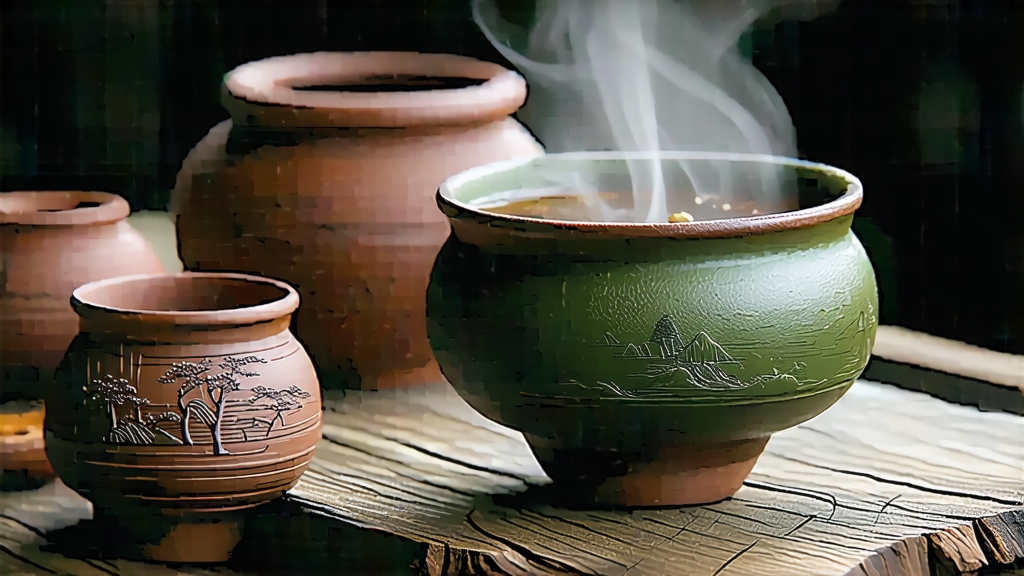
Tucked away in the southern folds of China’s Guangxi Zhuang Autonomous Region, Liu Bao tea has spent four centuries quietly perfecting the art of transformation. While Pu-erh has become the global shorthand for dark, post-fermented tea, Liu Bao remains the insider’s secret—an earthy, mellow liquor once carried on horseback along the Tea-Horse Road, now rediscovered by aficionados who crave depth, history, and the taste of a humid subtropical cellar. To understand Liu Bao is to listen to a story told by microbes, time, and the persistent people of Wuzhou city who still pack leaves into plaited bamboo baskets the same way their great-grandparents did.
Historical footprints
The earliest written record appears in the 1861 edition of the Cangwu County Annals: “Dark tea from Liu Bao village relieves dampness and malaria; merchants barter it for horses in Yunnan.” By the late Qing dynasty, Liu Bao had become a currency in its own right, pressed into rectangular bricks, wrapped in banana leaves, and strapped to mule saddles. Journeys that began at the port of Wuzhou ended in Hong Kong teahouses, where the British noticed its uncanny compatibility with evaporated milk and sugar—an accidental colonial fusion that predates chai latte by a hundred years. When the Pearl River Delta turned to opium and then to factories, Liu Bao faded into the dim warehouses of old tea traders, sleeping for decades until the 2006 renaissance when Guangxi collectors realized that 1950s baskets were auctioning for more than Bordeaux vintages.
Leaf and place
Liu Bao is not a brand but a地名 (place-name) tea: legally, only leaves picked within the 48 villages surrounding the Liu Bao township in Cangwu County may bear the name. The cultivar is a medium-leaf Camellia sinensis var. sinensis locally called “medium leaf with purple back,” prized for thick cell walls that withstand repeated wet-piling without collapsing into mulch. The terroir is classic southern karst: red clay soils rich in iron oxide, morning fog drifting off the Xun River, and an average humidity of 82 % that makes drying tea a negotiation with nature rather than a simple chore.
Crafting darkness
Unlike Pu-erh’s wò duī (piling on concrete floors), Liu Bao undergoes “wet basket fermentation,” a method recognized as national intangible cultural heritage in 2014. Fresh leaves are pan-fired at 280 °C for eight minutes to kill green enzymes, then rolled until the edges bruise into red. After a brief sun-wither on bamboo mats, the semi-dry leaves are sprayed with mountain spring water—never tap, never distilled—until moisture reaches 28 %. Workers pack 35 kg of damp leaf into plaited bamboo baskets lined with untreated cotton cloth; the basket’s porous walls allow ambient yeasts and Bacillus spp. to infiltrate while excess heat escapes. The pile is hoisted onto wooden racks in an above-ground storeroom whose windows are kept open only when outdoor humidity exceeds indoor, a rhythm directed by hygrometers and the intuition of master Chen Lianfang, a third-generation basket maker who claims he can “hear the tea breathe.” Over 25–35 days the pile is turned only twice, far less than Pu-erh, encouraging a slower, more uniform fermentation that yields russet leaves and the signature betel-nose aroma—an earthy note reminiscent of the areca nut chewed throughout Southeast Asia.
Aging architecture
Once fermentation stabilizes, the baskets are moved to underground cellars originally dug for opium storage in the 1910s. Here, temperature hovers at 24 °C year-round and humidity stays above 85 %, ideal for slow secondary fermentation. The tea is never re-baked; instead, it drinks the cellar air, gradually converting catechins into theaflavins and theabrownins, while a bloom of golden Eurotium cristatum—nicknamed “golden flower”—sometimes appears on the compressed surface, a badge of honor among collectors. Locals joke that Liu Bao is the only tea that “pays rent,” because each basket occupies precious cellar space priced by the square meter per decade.
Grades and shapes
The market recognizes four traditional grades: First, Second, Third, and Fourth, historically stamped on the basket lid in faded indigo ink. Modern producers have added